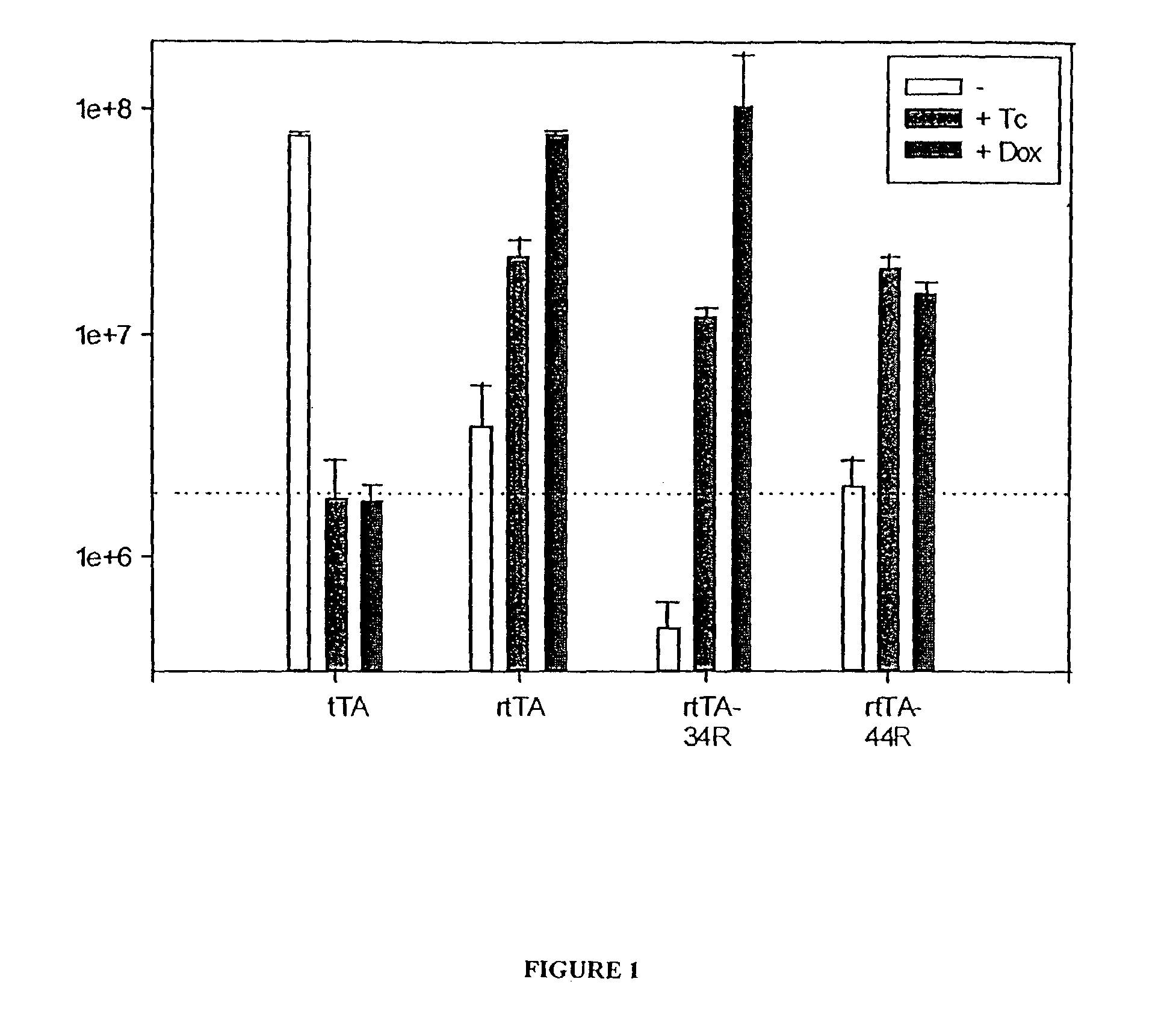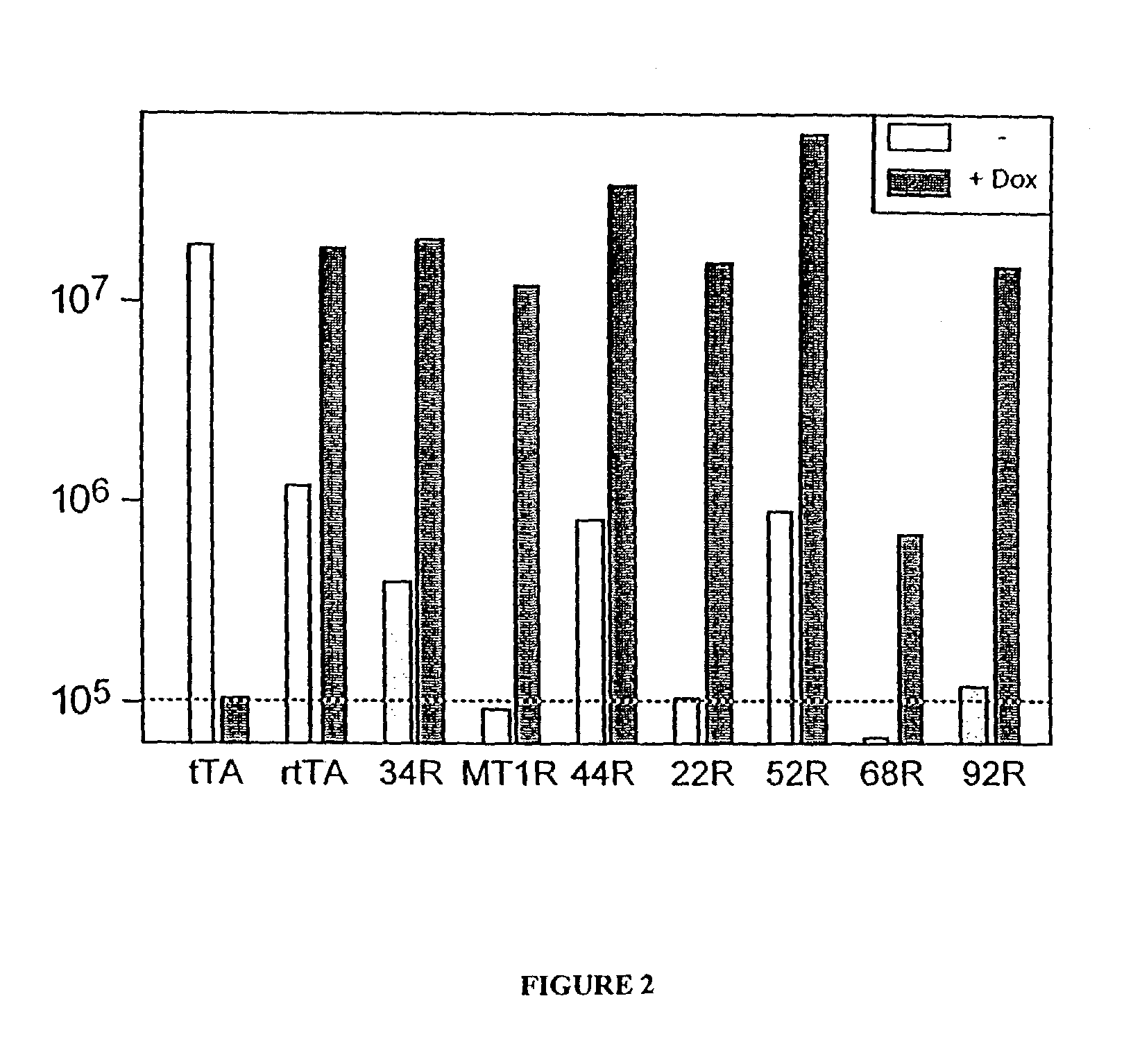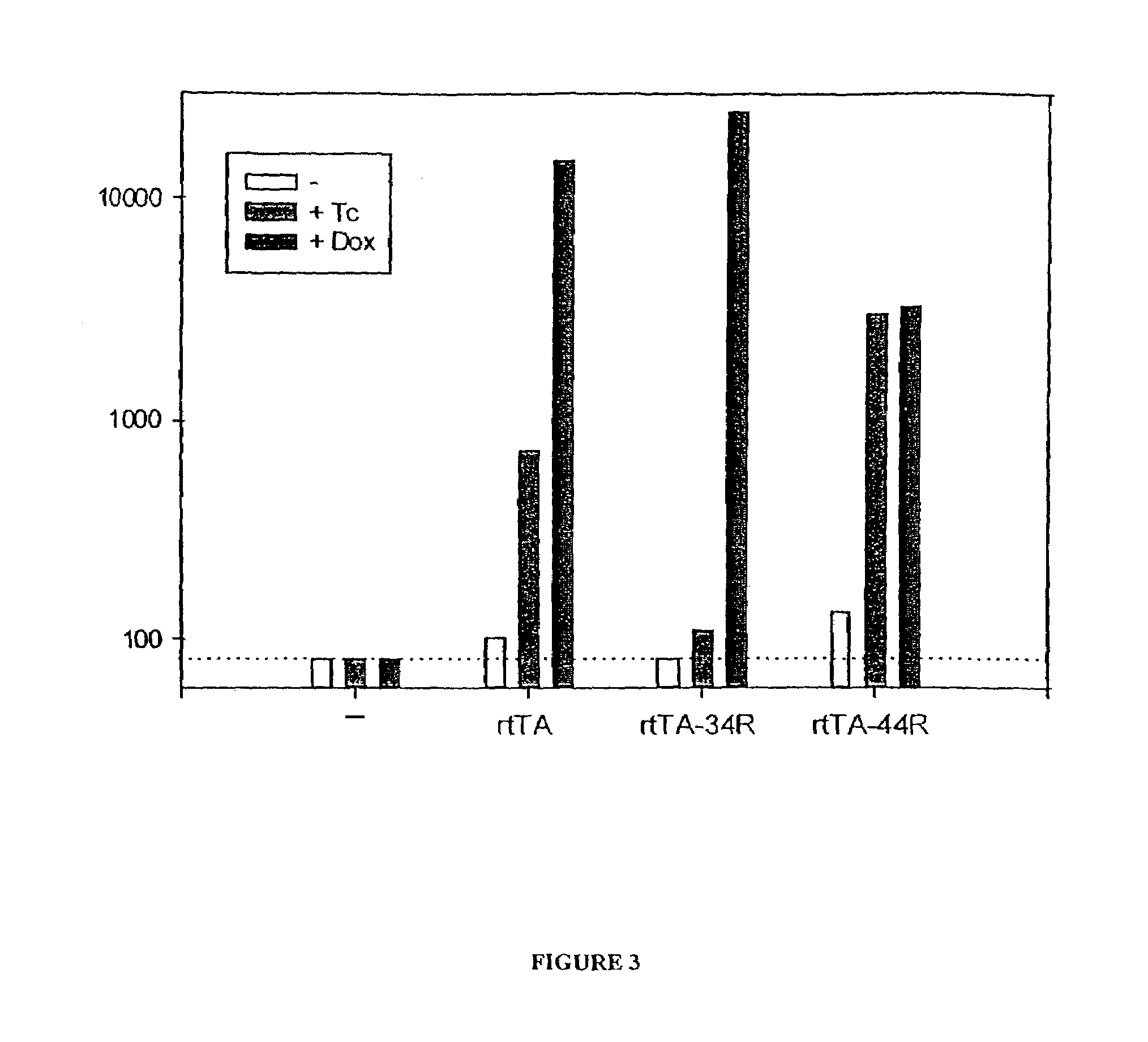Tet repressor-based transcriptional regulatory proteins
a transcriptional regulatory protein and repressor technology, applied in the field of tet repressor-based transcriptional regulatory proteins, can solve the problems of preventing their use, affecting the overall function, and active rtta proteins cannot be synthesized in a number of systems, so as to increase induced transcriptional activity, and reduce basal transcriptional activity
- Summary
- Abstract
- Description
- Claims
- Application Information
AI Technical Summary
Benefits of technology
Problems solved by technology
Method used
Image
Examples
example 1
rtTA Variants with Improved Properties
[0265]The gene encoding GFP was cloned into the multiple cloning site of pCM190 (Gari et al., 1997) to serve as an indicator of rtTA activity, yielding plasmid pCM190GFP+. The TetR portion of tTA was amplified for mutagenesis with two oligonucleotide primers, 5′-GACCGATCCAGCCTCCGCGG (SEQ ID NO:46), and 5′-CGTGTGTCCCGCGGGGAGAA (SEQ ID NO:47), from the vector pCM190 as described (Leung et al., 1989). The PCR-fragments and pCM190-GFP+ were restricted with XbalI and BsiWI and purified. The PCR-fragments and the vector were then ligated and transformed into E. coli DH5α. Several thousand E. coli clones were co-cultured, and their plasmid pools were prepared and transformed into S. cerevisiae using the LiAc-method (Ito et al., 1983). The RS453 strain of S. cerevisiae (MATa; ade2-1; trp1-1; can1-100; leu2-3,112; his3-1;ura3-52) was used for the screening protocol.
[0266]Transformation of the plasmid into yeast allows one to score differences in GFP acti...
example 2
Selection of tTA Mutants with Differential Induction by Tetracycline Analogues
[0274]In order to identify tTA mutations with different sensitivities towards tetracycline analogues, mutagenesis of the TetR portion of tTA, transformation and selection in yeast were performed as outlined above. For further analysis, the resulting candidates were transformed into yeast and spread on minimal medium plates in the absence of uracil, which contained either 10 μg / ml tetracycline, anhydrotetracycline, oxy-tetracycline, chloro-tetracycline or doxycycline. The yeast were grown for two to three days at 30° C. and their GFP expression phenotype was examined as described above. This led to the identification of several new tTA-alleles: 2, 11, 19, 22, 23, 24, 31, 36, 38, 45, and 50; the genotype of the novel tTA alleles is shown in Table 2 below. The reference sequence of the parent tTA is shown in FIG. 9.
[0275]
TABLE 2Novel tTA mutants1st aa2nd aa3rd aa4th aa5th aa6th aaDesignation of tTAexchange / ex...
example 3
A Novel TetR-Based Transactivator: rtTA-34R
[0281]The new allele encoding the reverse Dox-inducible transactivator rtTA-34R was sequenced and found to contain different mutations than the previously characterized rtTA. This demonstrates that a reverse transactivator phenotype can be obtained by mutations in different regions of TetR. The mutations found in rtTA-34R are: E19G, A56P, H139H (silent), A148E, and H179R. The amino acids at positions 95, 101, and 102, which are mutated in the original rtTA are the wild type residues in rtTA-34R.
[0282]To obtain additional information about the role of the mutated residues, we separated the mutations at positions 19 and 56 from those at 139, 148 and 179. The resulting proteins are called rtTA-1956R and rtTA-148179R. The activation potential of rtTA-1956R and rtTA-148179R was assessed in transient expression experiments. Plasmids encoding the respective rtTA variants were cotransfected with the pUHC13-3 luciferase indicator plasmid into HeLa c...
PUM
| Property | Measurement | Unit |
|---|---|---|
| Volume | aaaaa | aaaaa |
| Volume | aaaaa | aaaaa |
| Mass | aaaaa | aaaaa |
Abstract
Description
Claims
Application Information
 Login to View More
Login to View More - R&D
- Intellectual Property
- Life Sciences
- Materials
- Tech Scout
- Unparalleled Data Quality
- Higher Quality Content
- 60% Fewer Hallucinations
Browse by: Latest US Patents, China's latest patents, Technical Efficacy Thesaurus, Application Domain, Technology Topic, Popular Technical Reports.
© 2025 PatSnap. All rights reserved.Legal|Privacy policy|Modern Slavery Act Transparency Statement|Sitemap|About US| Contact US: help@patsnap.com



